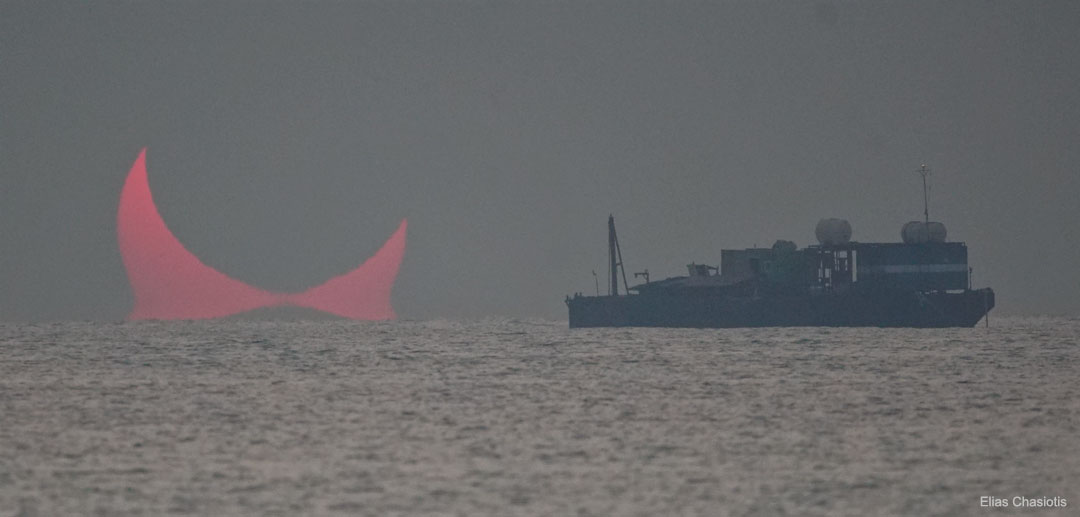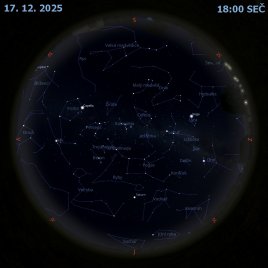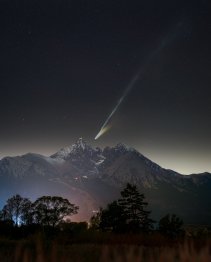Zborcený východ zatmělého Slunce

Uznání a copyright: Elias Chasiotis
Už jste někdy viděli takový východ Slunce? Po rozplynutí oblačnosti začalo být vidět, jak Slunce vychází ve dvou kusech a to při částečném zatmění, což fotograf popsal jako nejúžasnější východ Slunce jeho života. Tmavý prstenec u vrcholu atmosférou zčervenalého Slunce je Měsíc, ale stejně tak i ten tmavý vrchol pod ním. To je způsobeno tím, že při průchodu zemskou atmosférou tam byla inverzní vrstva neobvykle teplého vzduchu, která působila jako obrovská čočka a vytvořila druhý obraz. Při normálním východu nebo západu je tento vzácný jev atmosférické optiky znám jako jev Etruské vázy. Snímek byl pořízen v prosinci 2019 z Al Wakrah v Kataru. Někteří pozorovatelé v úzkém pásu na Zemi na východ mohli vidět plné prstencové zatmění Slunce, kdy je Měsíc zcela obkroužen Sluncem v pozadí v podobě ohnivého prstence. Příští zatmění Slunce, pro dobře umístěné pozorovatele rovněž prstencové, nastane za týden 10. června.
Seznam odkazů v popisu
- NASA: Sun
- NOAA.gov: Global Monitoring Laboratory - Red Sky
- NASA: Earth's Moon
- NASA: 463940main_atmosphere-layers2_full.jpg
- Wikipedia: Inversion_(meteorology)
- APOD: 2018-01-01 Sluneční halo nad Švédskem
- Shopify.com: Foto: druhý obraz kočičky :-)
- AtOptics.co.uk: Atmospheric Optics
- APOD: 2009-02-23 Etruská váza vycházejícího Měsíce
- Facebook: Elias Chasiotis
- BoredPanda.com: ‘Devil’s Horns’ Sunrise Photo Goes Viral And It’s 100% Real
- Wikipedia: Al_Wakrah
- Wikipedia: Qatar
- NASA: Earth
- APOD: 2012-05-19 Prstencové zatmění Slunce
- APOD: 2009-01-25 Prstencové zatmění: Prsten ohně
- TimeAndDate.com: June 10, 2021 Annular Solar Eclipse
NASA Official: Phillip Newman Specific rights apply. NASA Web Privacy Policy and Important Notices
A service of: ASD at NASA / GSFC & Michigan Tech. U.
Odkaz na originální APOD


